Nov 11, 2021 | Brazil, Economics, Environment
By Fanni Daniella Szakal, 2021 IIASA Science Communication Fellow
In an attempt to foster economic development for Brazil, the government is planning to open up indigenous and protected areas for mining. But will this truly lead to economic development for the country? 2021 Young Scientists Summer Program (YSSP) participant, Sebastian Luckeneder is using spatial modeling to find out.

© Prabhash Dutta | Dreamstime.com
As the largest rainforest on the planet, the Amazon harbors the highest biodiversity of all ecosystems and is home to many indigenous tribes. It is also literally sitting on a goldmine of natural resources. There are plans in the works to open up protected and indigenous areas of the rainforest to mining activities, which is expected to bring more wealth and development for the country, but at the same time, it will also pose a threat to the environment and indigenous communities.
At first glance, the issue looks like the classic trade-off between economic growth versus environmental and social disruption. In reality however, mining affects social, environmental, and economic spheres both directly and indirectly, creating a complex network of interactions that potentially defy the current dogma.
Mining relies heavily on machines while creating relatively few jobs in comparison to the investment of capital it requires. In addition, mining companies are often large international corporations, which means that most of the profits gained from mining operations in a particular country end up outside that country’s borders.
“One could say that just the very few benefit from extractive activities, whereas many have to pay the cost,” says Sebastian Luckeneder, a 2021 YSSP participant at IIASA, when referring to the environmental destruction, disruption of livelihoods, and displacement of indigenous communities that mining would bring about.
As a second-year PhD candidate at the Institute for Ecological Economics of Vienna University of Economics and Business (WU), Luckeneder is studying the environmental and socioeconomic impacts of mining activities. At IIASA, he used spatial modeling to understand how mining and land use affect regional economic growth in Brazil in the hopes of finding the best economic solution for the country.
Using GDP growth as a proxy for economic development, he looked at the impacts of mining and other types of land use between 2000 and 2020. The model incorporates data on mining, agriculture, and land-use change, as well as other socioeconomic factors, such as employment and infrastructure for about 5,500 municipalities in Brazil.
The study is as complex as it sounds: Luckeneder’s main challenge is to set up a theoretical framework that depicts how the environmental and socioeconomic factors influence each other. Once his comprehensive model is complete, he hopes to get a clear picture of how mining affects the Brazilian economy.
He suspects that while mining activities would bring some economic gains, these might not be sustainable, as the environmental and social upheaval that follow the opening of a mine could negatively impact development in the long-run.
While economic development is important, in the current climate crisis, decisions to enable activities that lead to deforestation cannot be taken lightly. Luckeneder hopes that his results will be used to inform the political debate in Brazil and support policy decisions by the way of science.
Sep 23, 2021 | Brazil, China, Data and Methods, Energy & Climate, India, Russia, Science and Policy, Young Scientists
By Neema Tavakolian, 2021 IIASA Science Communication Fellow
Ever wonder why countries can never agree on issues related to climate change and the environment? Young Scientists Summer Program (YSSP) participant Felix Schenuit dives into the politics and challenges surrounding carbon dioxide removal in international climate negotiations.
The Paris Agreement has been lauded as a landmark effort to address climate change and has been signed by nearly every country in the world. The agreement sets out ambitious goals such as reaching temperature targets, setting net-zero carbon targets, and providing financial, technical, and capacity building support to those countries that need it.
One topic that has been receiving increasing attention since the adoption of the agreement is carbon dioxide removal, or CDR – which comprises man made processes involving the direct removal of carbon dioxide from the atmosphere and sequestering it somewhere else, usually underground or under the sea floor. Since it was first proposed, CDR has been discussed on many platforms including critical comments, journals, and studies. 2021 IIASA YSSP participant Felix Schenuit studies how the debate, which has been largely ignored by policymakers until the Paris Agreement, is evolving, and how CDR is being taken up in climate policymaking.
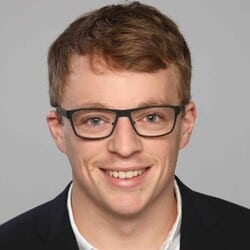
© Felix Schenuit
Felix Schenuit comes from a background of political science and public policy. It was during his employment at the German Institute for International and Security Affairs (SWP) that he became fascinated by CDR and the political debates surrounding the impacts it can have on the fight against climate change. This is when he decided to combine his newfound interest with his background and experiences in international relations and public policy to pursue a PhD at the University of Hamburg comparing CDR policymaking in different countries and the role scientific knowledge has on its implementation.
Building on a previous study comparing CDR governance among nine Organisation for Economic Co-operation and Development (OECD) cases, Schenuit is now focusing on the role of scientific knowledge surrounding CDR in Brazil, China, India, and Russia. These countries account for a significant portion of the world’s greenhouse gas emissions due to their rapid industrialization and expanding economies. China and India are especially significant due to their great influence in ongoing international climate negotiations regarding the Paris Agreement.
Schenuit uses integrated assessment models to gather information and data about the role of CDR in different countries in decarbonization pathways.
“These models help us to understand what amount of CDR we are likely to need to achieve Paris Agreement targets. Case studies on specific countries are an important second step to explore facts on the ground about different policy initiatives, emerging CDR facilities, and efforts in each region. We reach out to country experts and build interdisciplinary bridges to investigate how CDR is addressed politically, what amounts are available and politically feasible, as well as relevant knowledge gaps,” he explains.
One of the biggest challenges remaining for CDR is limited knowledge about different CDR methods, both in science and policy circles. There are many ways one can remove carbon dioxide from the atmosphere, ranging from afforestation, to soil carbon sequestration, ocean fertilization, direct CO2 capture from the air, and the use of biochar, among others.
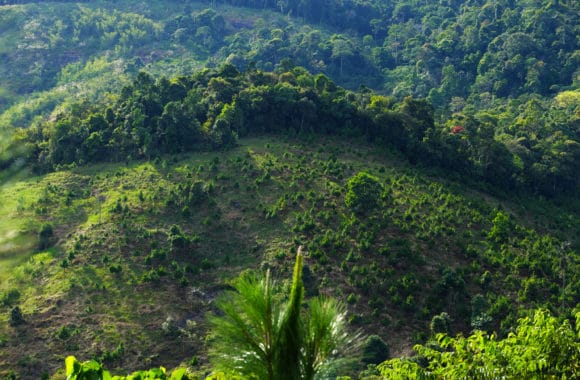
Reforestation on hill at Bao Loc mountain pass, Vietnam © Hoxuanhuong | Dreamstime.com
“When it comes to methods, many policymakers are unaware of the portfolio of available methods. Each method has different tradeoffs, both environmentally and politically. For example, in Germany, carbon capture and storage (CCS) is very contested and most policymakers are hesitant to even address CDR. Thus, in Germany one may need a different set of methods than in the UK, for example, where CCS-based CDR methods are pursued proactively,” Schenuit says.
Many predict that the role of international politics in CDR governance under the Paris Agreement is going to be difficult and tricky to navigate. Schenuit argues that it is still a bit too early in the debate for predictions as policymakers have only recently been directly addressing CDR. He does however agree that there is already strong evidence of politics at play and alliances are forming.
The study on Brazil, China, India, and Russia will yield fascinating results, as it will give us an idea about future disputes and questions regarding the carbon in our atmosphere. Questions like where we will be removing carbon and who is going to pay for it. One thing is for certain, however. Time is running out to meet the targets of the Paris Agreement, and international cooperation is desperately needed.
Note: This article gives the views of the author, and not the position of the Nexus blog, nor of the International Institute for Applied Systems Analysis.
Apr 8, 2020 | Brazil, COVID19, Health, Women in Science
By Raquel Guimaraes, postdoc in the IIASA World Population Program
IIASA postdoc Raquel Guimaraes writes about efforts by the scientific community to encourage governments in Latin America and the Caribbean to increase COVID-19 test coverage to reduce vulnerability.
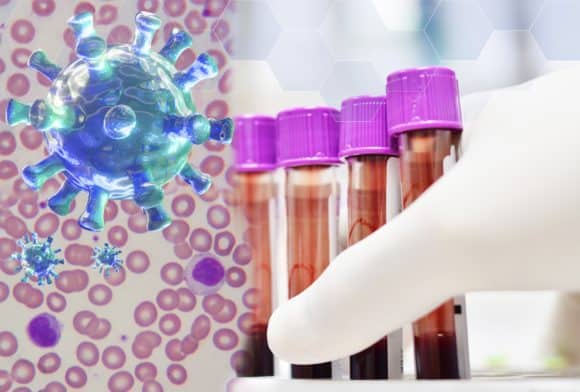
© Kukhunthod | Dreamstime.com
Together with a group of demographers from Latin America and the Caribbean (LAC), and endorsed by more than 250 individuals from the academic community, I contributed to a statement urging governments, the World Health Organization, and the Pan American Health Organization, to take immediate action to drastically increase the coverage of COVID-19 tests in the region. This call for action was disseminated by the British Society for Population Studies, Asociación Latino Americana de Población, Sociedad Mexicana de Demografía, Associação Brasileira de Estudos Populacionais, and the Population Association of America, among other important institutions.
I joined this initiative by invitation from Dr. Enrique Acosta and other colleagues, because I firmly believe that the prospects for the COVID-19 pandemic in the LAC region are rather dramatic. Several studies document that, apart from being globally recognized for its high levels of economic and social inequality, the region also suffers from institutional coordination failures and poor governance, a lack of appropriate resources, and presents a unique epidemiological and demographic profile of its population that escalates the negative prospects of the pandemic. I wanted to explore in more detail why these features of LAC are a source of major concern and require immediate action.
Social and economic inequality in LAC will hamper the enforcement of social distancing and isolation measures, which have proven to mitigate the COVID-19 epidemic in other settings. More than half of the population is in the informal labour market and does not have access to social safety nets. For those covered by the social security system, the benefits already proposed by a few governments of the region such as Brazil, fall short of the daily needs of families. In addition to economic inequality, social inequality, which leads to a high degree of cohabitation between adults and the elderly, increases the exposure of those with the highest risk of complications and death.
In addition, with the closure of schools, children who do not have access to day-care centres and the public- or private education system, often rely on the help of their grandparents, which again brings greater vulnerability to families. Not to mention that these children won’t have ensured their learning opportunities, because their parents are often working and not able to home-school them, thus compromising their education outcomes.
Moreover, LAC is facing a rapid demographic transition and aging process, which is temporarily increasing the prevalence of a young population, meaning that the population age-structure of potential infected individuals differs from that of other settings. However, unlike the more developed countries, LAC’s epidemiologic transition, that is, the transition in which the prevalence of infectious diseases is “substituted” by chronic and degenerative diseases, is not complete. Paradoxically, the region exhibits both the prevalence of diseases that have long been eradicated in more developed contexts (such as malaria, dengue, and tuberculosis) and diseases of richer countries (such as hypertension, diabetes, and neoplasms).
On top of all the above-mentioned vulnerabilities, crisis-management efforts in the region are uncoordinated, and lacking transparency and commitment. Taking Brazil as an example: while some mayors and governors adopt measures of social isolation and prevention against COVID-19, parts of the federal executive power not only disdain the problem, but encourages the population not to meet the requirements established by the Ministry of Health. Such conflicting rules are bound to cause misunderstandings among the LAC population. The COVID-19 pandemic is a crucial moment for institutional coordination to ensure the effective management of the crisis.
As an important and urgent call to action for the pandemic in the region, myself and other LAC researchers are calling for an increase in test coverage and measures of social isolation. As reported in the non-specialized media under the slogan “help to flatten the curve”, social isolation allows the rate of contagion of the virus to be reduced, in order to prevent overloading the capacity of the health system. Existing literature documents that while the virus does not cause major damage to health for the majority of infected persons, it brings a high cost to the health system. Furthermore, the impacts on the later lives of individuals who were hospitalized due to the disease are not yet known. Not to mention, of course, the human tragedy and the costs in terms of lives lost to the disease.
Finally, imperative and immediate action against COVID-19 in LAC will depend on the widespread and low-cost application of tests. This is required because the former rigorous isolation measures mentioned above are highly ineffective if not accompanied by aggressive strategies to detect cases of COVID-19. This highlights the relevance of data collection to better inform policymakers and provide researchers with clear diagnoses of the conditions in the region.
References:
Deaton A (2013). Cap. 3. Escaping death in the Tropics. In The Great Escape: Health, Wealth, and the Origins of Inequality. Princeton University Press.
Hoffman K, & Centeno MA (2003). The Lopsided Continent: Inequality in Latin America. Annual Review of Sociology, 29(1), 363–390. https://doi.org/10.1146/annurev.soc.29.010202.100141
Khemani S, Ferraz C, Finan FS, Johnson S, Louise C, Abrahams SD, Odugbemi AM, Dal Bó E, & Thapa D (2016). Making politics work for development: Harnessing transparency and citizen engagement (Policy Research Report). The World Bank. http://documents.worldbank.org/curated/en/268021467831470443/Making-politics-work-for-development-harnessing-transparency-and-citizen-engagement
Pérez CC, & Hernández AL (2007). Latin–American public financial reporting: Recent and future development. Public Administration and Development, 27(2), 139–157. https://doi.org/10.1002/pad.441
Note: This article gives the views of the author, and not the position of the Nexus blog, nor of the International Institute for Applied Systems Analysis
Oct 1, 2018 | Brazil, Postdoc
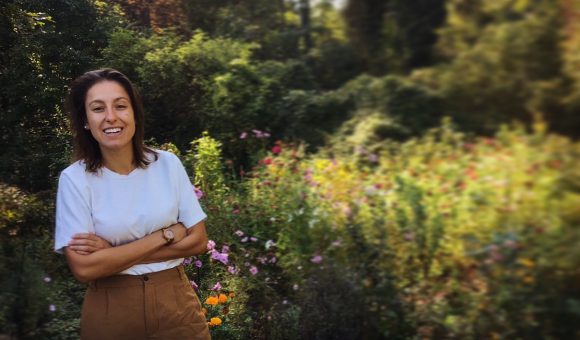
Camila Ludovique – personal archive.
By Camila Ludovique, research assistant CAPES/IIASA Sandwich Doctorate
I come from Brazil, more specifically from the Energy Planning Program of the Federal University of Rio de Janeiro, that postcard city that most of you may have already seen in pictures, with gorgeous mountains beside the ocean, the sunsets…
But, on the ground we have many problems, as do all the major cities in the developing world, including a high increase in the population, about 11 % in the last decade, who require transport services work, housing, leisure and happiness.
However, higher than the increase in Rio’s population was the increase in its automobile fleet, around 110%, to supply the demand for transport in the city. The result: immobility, traffic jam, environment degradation and loss of quality of life. Then, one day I realized: something needs to be done to transform the business-as-usual scenario!
I started to wonder, how can we develop a society that is more sustainable? How can the transport passenger sector play its role in the decarbonization of economy? Moreover, how can we answer these questions?
By building mathematical models, which try to simulate the real dynamic of full economies, to assess different strategies towards a low-carbon transport system. In this way, we can try to help politicians to understand the emissions problem in a quantitative framework. We can build a dialogue, supported by numbers and evidence on the effectiveness of different policies, measures, and actions to reduce CO2 emissions from the transport sector.
Articulating this complex issue in the context of mathematical language allows us to expand the boundaries of our mental models and ideas, define them and generate scenarios to figure out what that means in practice. The models will not give us the answer – all models are wrong – but they will give us insights that improve our mental models and the mental models of all the people who need to be involved in order for change to happen, so that people are empowered with effective policies with good leverage to go out there and make a difference. This is what makes some models useful.
And that is why IIASA appears in my life…
Choosing IIASA
Here at IIASA we have researchers and expertise from all around the world, allowing us to develop mathematical models to transform science into actions and to achieve better levels of sustainability in our world.
Being a little bit more technical, there are many examples of how and where emissions from transport have been accounted for through modelling approaches, but, roughly, we can say that there are main two types of models – the top-down and the bottom-up approach.
The bottom-up approach builds the model through more desegregated data. This means, for example, that you can differentiate the emissions pattern between the weeks and the weekends, so you can have a better understanding of the behavior and activities of human beings inside your model, which leads to more realistic outcomes.
The top-down approach uses more aggregated levels of indicators, such as the average distance in kilometers traveled per capita of a country in a year, known as PKT in the transport sector. This is just one value to represent the whole population, which doesn’t allow us to see very detailed patterns of human activity, but it allows us to see much further, around the whole globe, and compare how each region may evolve. On the other hand, the bottom-up approach cannot see a big region without losing the capabilities of a desegregated model.
I used to say that one is myopic and the other has astigmatism. How can we solve this dilemma?
Working with both… and that is why IIASA benefits me
The institute has an important and famous top-down model, the Model for Energy Supply Strategy Alternatives and their General Environmental Impact, better known as MESSAGE. It which provides core inputs for major international assessments, such as the IPCC, and here I am – in this castle in Europe, learning how to model in a global scale.
Besides that, I am also developing a bottom-up model that applies big data to assess the urban passenger emissions in Rio de Janeiro, creating a tool that seeks to answer how we can achieve the transition paths to reduce the carbon footprint of the transport sector, and how much it will cost. This will help my country develop strategies towards sustainable mobility and a better quality of life for Brazilians who live in Rio de Janeiro, or those who travel to that wonderful city.
Why apply for the IIASA doctorate program?
IIASA is not in Vienna itself, it is in Laxenburg, a small village south of Vienna, which means if you want to live in the city, you must travel. But, if that is not a problem for you, I really would recommend IIASA for you!
IIASA has good infrastructure, and there are great people from all over the world, all friendly. There are many activities in the summer time, that even offer free beer! There is also the mountain club, the music club, a great park to run in, or walk in, which is full of nature. For sure, it is a good place to live and finalize your long life of studies. Come to make part of this history.
Applications for the 2019 IIASA-CAPES Doctorate Sandwich Program and Postdoctoral Fellowship Program opened on 1 September 2018 and will run until 15 October 2018. Candidates have to apply to both CAPES (on the CAPES website) and IIASA. Successful applicants will be informed of the selection results by mid-December 2018. Selected candidates are expected to take up their position at IIASA between March and October 2019.
Note: This article gives the views of the author, and not the position of the Nexus blog, nor of the International Institute for Applied Systems Analysis.
Sep 14, 2018 | Brazil, Postdoc
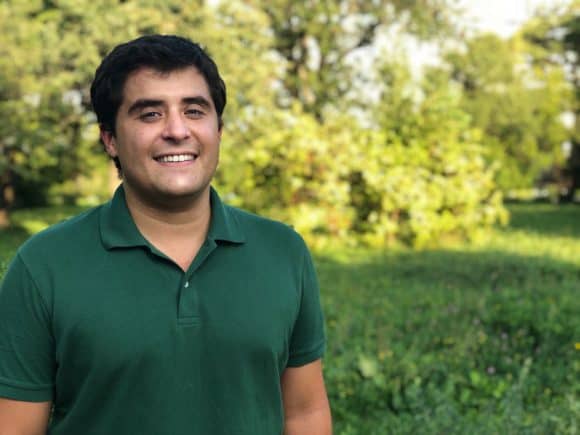
Julian Hunt – personal archive.
Julian Hunt is a postdoc at IIASA and part of the Brazilian Federal Agency for Support and Evaluation of Graduate Education (CAPES) scheme.
My postdoctoral research consists of looking at the world potential and costs of storing energy and water with large-scale pumped-storage plants. This consists of developing computational models using world topographical and hydrological data to develop all possible projects in the world. The results from my research could then be used by countries to analyze the viability of building seasonal pumped-storage for short, medium, and long-term energy storage needs and to improve the water management of the country.
I first heard about IIASA at the Vienna Energy Forum in 2010, when I was doing an internship at UNIDO. I got the impression that IIASA was a major contributor to the science that supports major claims by the UN. This led me to start reading about IIASA’s projects and follow its research. I did not think twice when I received an invitation to apply for the IIASA-CAPES fellowship, which gave me a chance to join the institute and develop my own high impact research. One thing that might stop Brazilian people from applying for this scholarship is because the native language in Austria is German. However, IIASA’s working language is English and in Vienna most people speak English.
IIASA focuses on applied and high impact research at a global scale. Prior to my experience at IIASA, I used to develop new technologies looking only at one or a few cases studies. This limited the research to a small readership, which would think that the technology could only be implemented in one location. With the experience I had at IIASA, I learned to combine my technological expertise with computer modelling and Geographic Information System in most of my work. This considerably increased the readership and impact of my research, and citations of my papers.
Working at IIASA you can focus only on your research. Normally when doing research at universities you might have to give lectures and supervise students. This reduces the important focus on research. At IIASA the main activities are to research, publish articles and scientific reports, present your work at conferences, collaborate with other research institutes, develop projects and so on. The main activities of a researcher. Similarly to universities, there is always finger food (free lunch) available, but the quality is much better.
IIASA is located close to Vienna, which is a beautiful, lively, and affordable and city. Vienna was voted the best city to live in the world and I agree with this. Another important aspect is the social life. IIASA has a very active social life, which includes regular events and parties, different societies (music club, running club), an active Staff Association (STAC) and the possibility of making friends from around the world. Becoming IIASA alumni will also open doors for your future. For example, the Young Scientists Summer Program (YSSP), brings around 50 of the best researchers in the world every year to IIASA. This results in a large network of IIASA alumni researchers.
I highly recommend that researchers, fluent in English, who want to give a huge boost to their research career, learn a lot of valuable methodologies, solve holistic and complex problems, make good friends, and increase their network should apply for a research position at IIASA.
Applications for the 2019 IIASA-CAPES Doctorate Sandwich Program and Postdoctoral Fellowship Program opened on 1 September 2018 and will run until 15 October 2018. Candidates have to apply to both CAPES (on the CAPES website) and IIASA. Successful applicants will be informed of the selection results by mid-December 2018. Selected candidates are expected to take up their position at IIASA between March and October 2019.
Note: This article gives the views of the author, and not the position of the Nexus blog, nor of the International Institute for Applied Systems Analysis.
Sep 7, 2018 | Brazil, Education, Postdoc

Rafael Morais
Rafael Morais is a recent participant in the IIASA-CAPES Doctorate Sandwich Program, he spent nine months at IIASA working in the Energy program.
In 2016, the Brazilian Federal Agency for Support and Evaluation of Graduate Education (CAPES) partnered with IIASA on a new initiative offering support to doctoral and postdoctoral researchers interested in collaborating with established IIASA researchers. As part of this initiative, IIASA and CAPES annually offer up to three fellowships for Brazilian PhD students to spend three to twelve months at IIASA as part of the joint IIASA-CAPES Doctorate Sandwich Program, as well as up to four postdoc fellowships that enable Brazilian researchers to work at IIASA for up to 24 months.
Rafael Morais, a PhD candidate at the Energy Planning Program of the Federal University of Rio de Janeiro, was part of the first group of Brazilian PhD students funded by CAPES to participate in this program. He spent nine months with the Energy Program at IIASA in 2017. We recently caught up with him and asked him about his research and what the fellowship has meant to him:
What is your PhD research about?
My research involves modeling the contribution of renewable energy sources in electric systems. My doctorate thesis includes a case study on Brazil, where we have large potential for wind and solar power generation in various regions. My main objective is to investigate how total costs develop considering the number of wind and solar plants in the Brazilian electricity system.
Why did you choose IIASA for your doctorate program (over other places)?
I chose IIASA because it is a very reputable think tank for energy and model development. People are very capable and well prepared. They have been working on energy systems modeling for many years, and their experience motivated my decision to come to IIASA. I talked with some people that were at IIASA before me and they were all very grateful for the experience. Another important factor was that it is an international institute, where one can have contact with people from many different countries, and the main language is English.
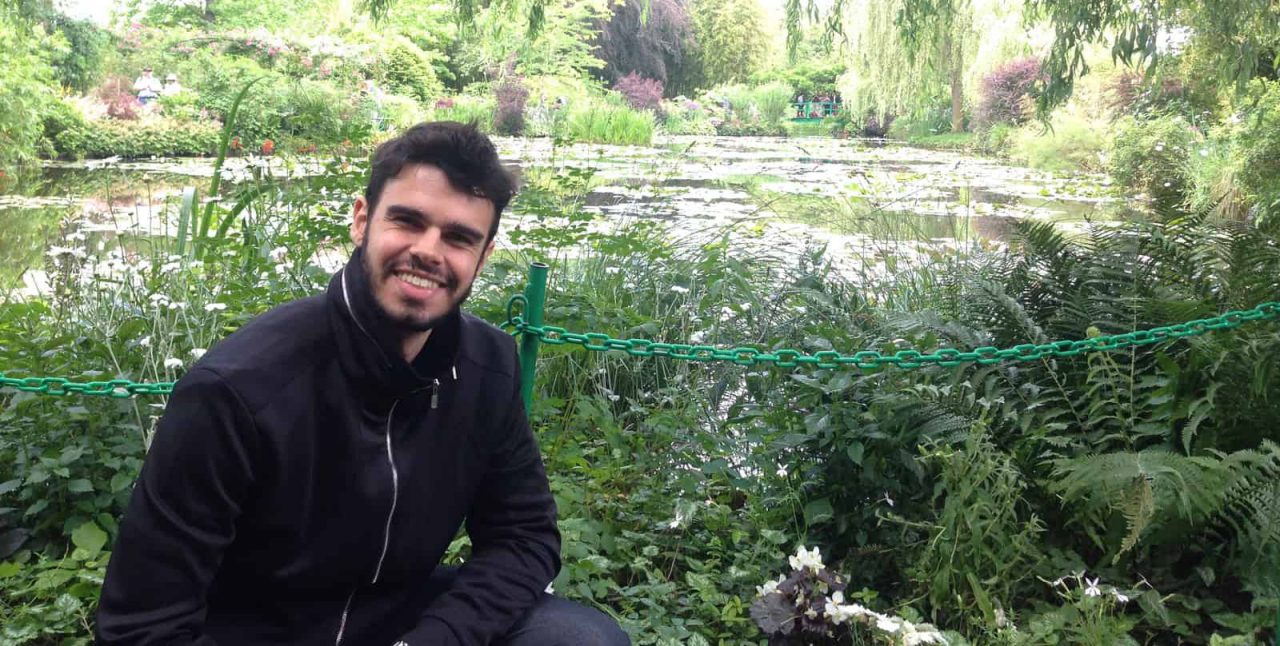
Rafael Morais
How did your participation in the program benefit you?
I had the opportunity to get into contact with diverse approaches to my research questions, thus enriching my thesis. Unlike my home institution, IIASA does not have only energy experts, but also computer scientists, mathematicians, and physics experts, all working in the same group, and all contributing to a great modeling team. Being here was an excellent opportunity to collaborate with them. As my first experience abroad, it was also a chance for me to grow and develop other skills, both on a professional and a personal level.
Would you recommend that people apply for the IIASA-CAPES doctorate program?
Yes, I would definitely recommend it! IIASA is a very nice place to work. People really care about a harmonious work environment, and IIASA staff are always available to help you with any issue. Apart from that, the people that I worked with during my time here are very knowledgeable and kind. In short, it was a great experience being at IIASA for nine months during my PhD.
Applications for the 2019 IIASA-CAPES Doctorate Sandwich Program and Postdoctoral Fellowship Program opened on 1 September 2018 and will run until 15 October 2018. Candidates have to apply to both CAPES (on the CAPES website) and IIASA. Successful applicants will be informed of the selection results by mid-December 2018. Selected candidates are expected to take up their position at IIASA between March and October 2019.
Note: This article gives the views of the author, and not the position of the Nexus blog, nor of the International Institute for Applied Systems Analysis.









You must be logged in to post a comment.